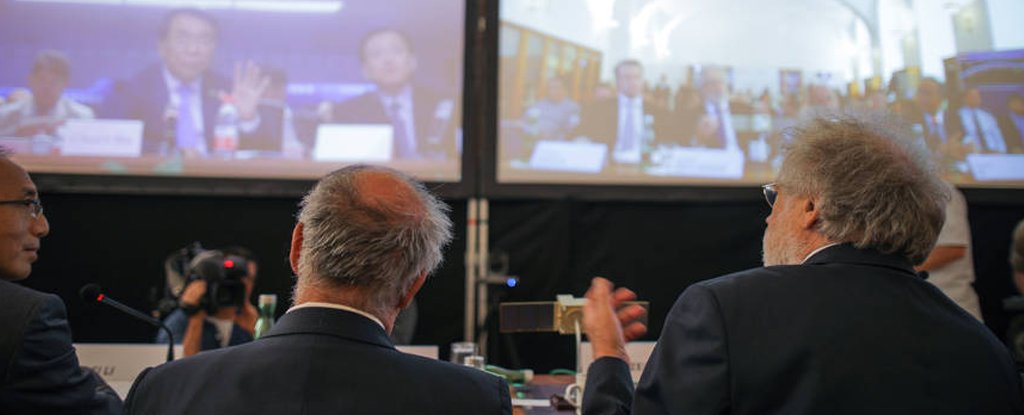President Chunli Bai of the Chinese Academy of Sciences in Beijing had a meeting yesterday with President Anton Zeilinger of the Austria Academy of Sciences in Vienna.
Although 7,400 kilometres (4,600 miles) apart, they were certain no uninvited guests were eavesdropping thanks to the fact their video call was encrypted. Quantum style.
Just a few months ago, China was in the news for a landmark achievement in quantum communication, using a satellite called Micius to transmit entangled photons over a record distance.
Clearly researchers from the Academy of Sciences have been busy turning this test into something more practical, allowing quantum encrypted data to be transmitted and unlocked from across the globe in the form of a historic video conference.
"The exchange of quantum encrypted information over inter-continental distances confirms the potential of quantum communication technologies as opened up by fundamental research", says Zeilinger.
"This is a very important step towards a world-wide and secure quantum internet."
 Austrian Academy of Sciences
Austrian Academy of Sciences
We're not entirely sure what was said during the call. Sadly, we weren't invited.
Even if we wanted to listen in – not that ScienceAlert condones such behaviour – any efforts would have immediately found out thanks to quantum weirdness.
One can guess they might have chatted in depth about how mind-blowing quantum physics is, and how this lends itself to encrypting messages.
Perhaps President Bai explained to President Zeilinger that Micius (no doubt dropping in the fact he was named after an ancient Chinese philosopher) orbits 500 kilometres (310 miles) above Earth's surface.
We imagine President Zeilinger just nodded and said, "Sweet".
President Bai might have gone on to explain how Micius sent streams of photons to ground stations in China and Europe.
The photons in these streams were polarised, making each one act like a binary code of a 1 or a 0.
In other words, these photon codes acted like unique keys, which could be used to secure any data each side transmitted.
This random sequence of 1s and 0s was entangled – or imprinted on – other photons on Micius, leaving an impression of the key.
"But here's the kicker," we're sure President Bai explained.
According to the rules of quantum mechanics, particles exist in a fuzzy state of probabilities.
A particle only becomes 'real' once it's part of the chain of tools we use to measure them (and that includes our own brains).
The receiving stations in Europe and China could each look at their "key" of photon 1s and 0s, in the process turning them from a possible key of any combination into a real one.
At the same time, the sequence held by Micius would become a real key as well.
If the keys matched, each side could tell that nobody tapped into that stream and took a peek.
If an eavesdropper had grabbed any of those photons streaming down from Micius (such as a certain writer from ScienceAlert), read the code, and then replaced them, the new key wouldn't match the one held by Micius, telling them their data was no longer secure.
We imagine President Zeilinger would have heartily congratulated President Bai and thanked him for the wonderful explanation of quantum communication, and cheered three times. Maybe.
Whatever happened in that conference call, no doubt there will be more like it in the future.
So far, quantum communication is limited to making keys such as these, and not conveying large amounts of data. New research is emerging finding better ways to cram more information into quantum communication streams by using more than binary states.
In any case, quantum communication is now a reality.
Heinz W. Engl, the Rector of the University of Vienna, quoted the renowned physicist Max Planck in an Austrian Academy of Sciences press report, saying, "Insight must precede application."
Over a century of insight has gone into this amazing application. This phone call was just the beginning.
